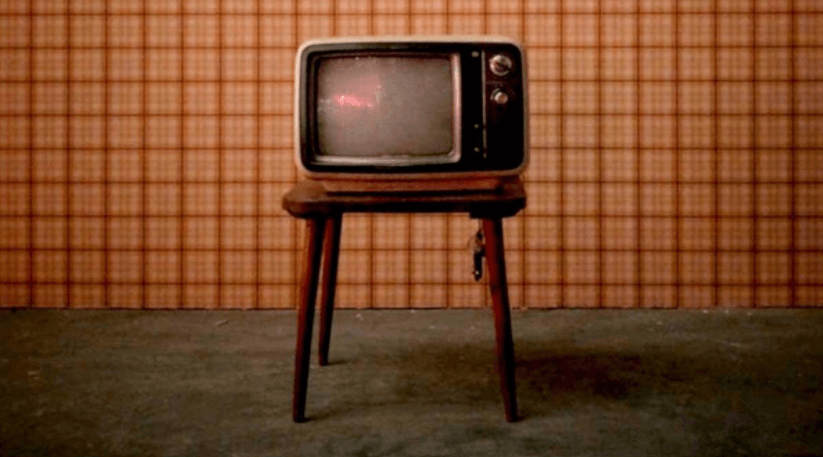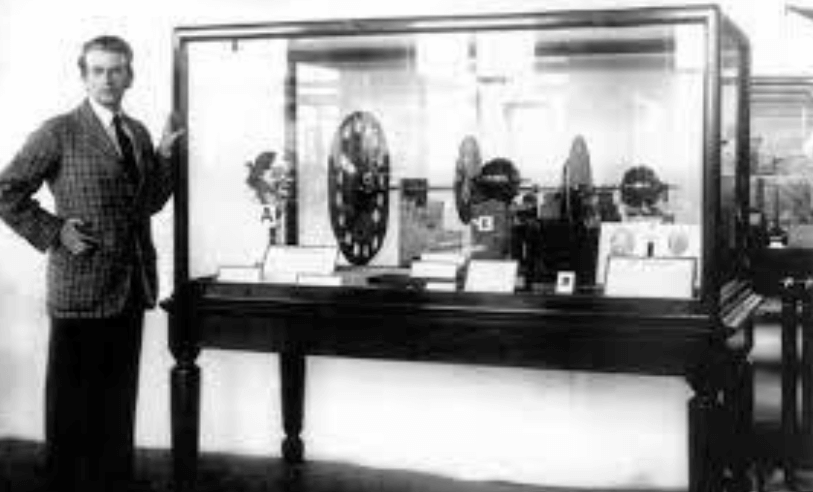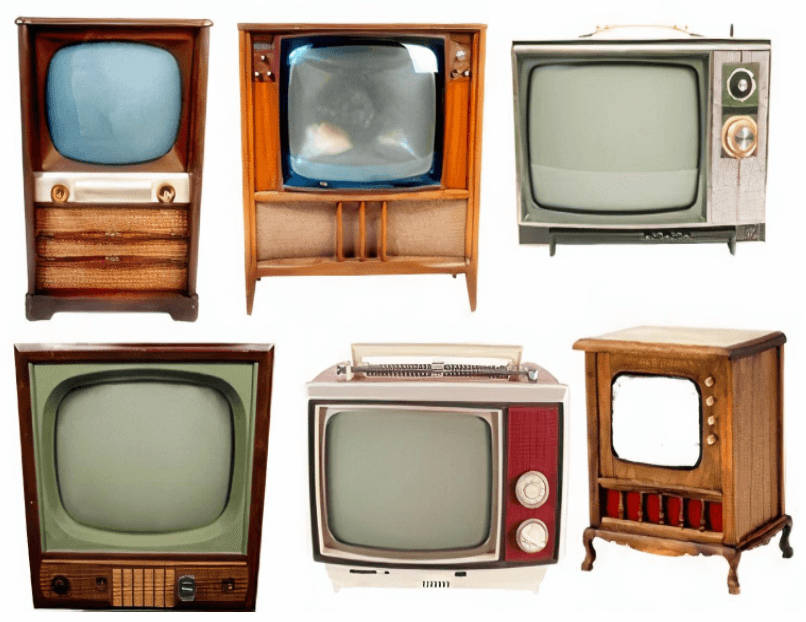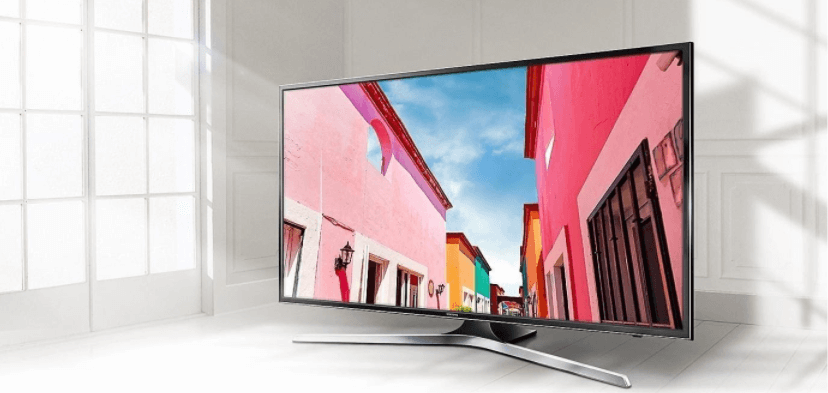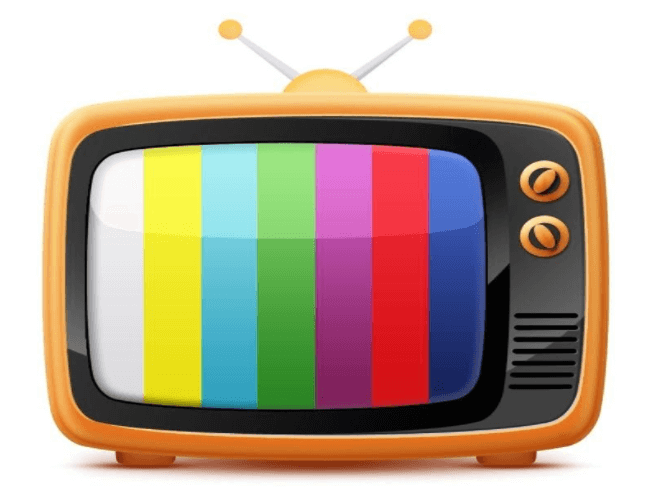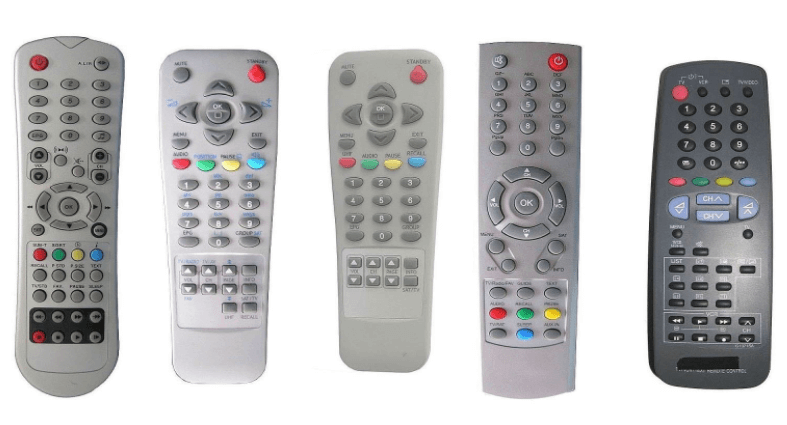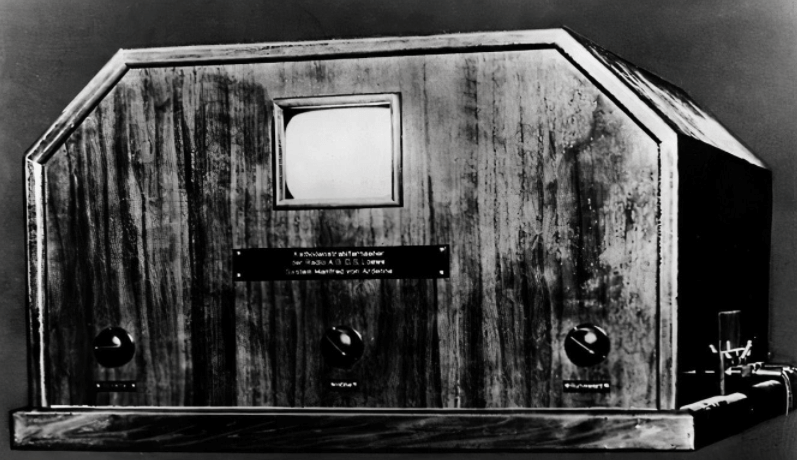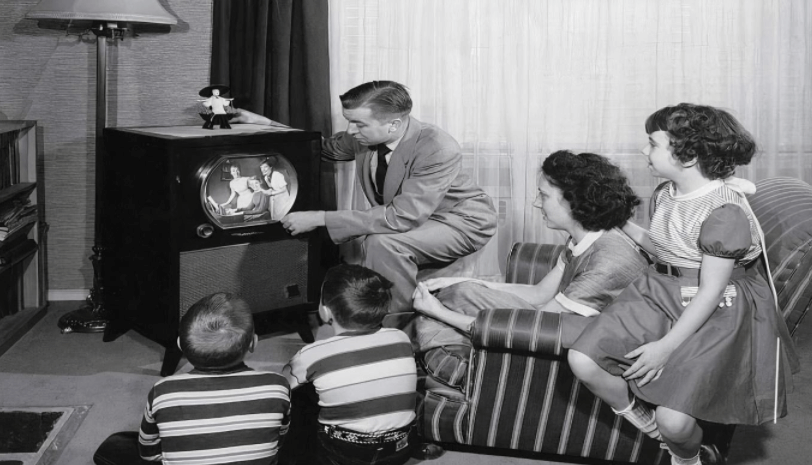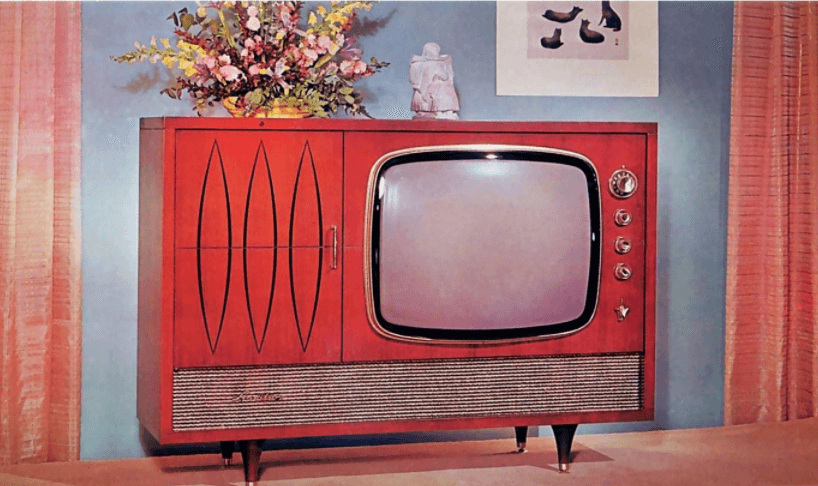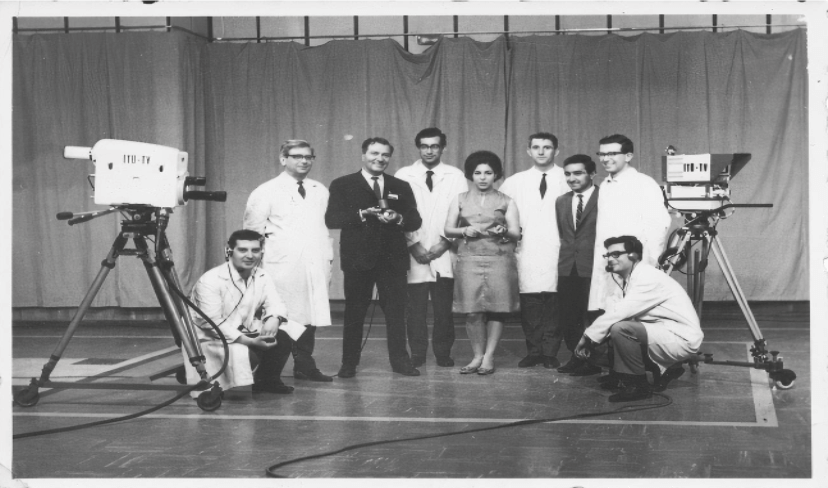The invention of television is a great innovation that has left its mark on our daily lives. Television, which helped its inventor to realize his dreams, is a device that transmits images and sound away by electricity. In this article, you can find answers to frequently asked questions about television, such as what television is, how television was invented, who is the inventor of television, how television was created, what parts television consists of, the change of television from past to present, how television affects society.
The Great Breakthrough: What is Television?
The name television is derived from the Greek words Tele (far) and the Latin Visio (see), meaning see from afar. It is a communication device with the equipment to receive various images and sounds and transfer them to you when appropriate mechanisms are present on the television.
Television can basically be defined as an electronic device that transmits images and sounds emitted in the form of electromagnetic waves to the receiver through the screen and speaker. This magical box has undergone many changes and developments and has taken its most important place among today’s indispensable. This invention, which gives people the opportunity to give and receive the news very quickly, and to broadcast live at the same time, has also led to negative situations such as weakening human relations and reducing conversations.
Inventor of Television: Scottish Inventor John Logie Baird
Born in Helensburgh, Scotland, in 1888, Baird was the youngest of four children to Reverend John Baird and Jessie Morrison Inglis. With his interest in electricity, an inquisitive boy, Baird managed to light up their homes at the age of 12 by making an oil-powered generator. Not only that, he established a small telephone exchange and communicated with his friends.
Baird uncovers the invention of television using his superior intelligence.
Baird, who studied electrical engineering at the University of Glasgow, had to take a break from his education during the First World War. Baird, who got a job in an electricity company in agreement with the army, made significant progress. However, he could only get the chance to think about television at night due to his busy work schedule.
Then in 1922, he made his way to his hometown of Sussex. Baird, who was dealing with both his health and financial problems, managed to reveal the century’s invention by using his superior intelligence. Continuing to work on infrared rays after the invention of television, his childhood dream, Baird died in June 1946 and made a name for himself for years.
How exactly did the invention of television take place?
Humankind was familiar with photography, and by the 1920s, cinema had become a popular form of entertainment. Radio took its place shortly after. The next step was to put the two together and transmit motion pictures away, but how would that be? That question could be answered with the invention of television. John Logie Baird came up with the idea that would change his life. Why wasn’t he converting the images into signals and sending them over the air? Baird didn’t actually invent any of the materials used to make the television. When he looked at these different inventions, his strength lay in his ability to put together the pieces needed to achieve what he wanted.
The word “television” completely changed the life of the inventor.
John Logie Baird started his work on television from a very young age. The word ‘television’, which he saw in one of the magazines he read one day, changed his destiny from head to toe. This word was uttered for the first time at the International Electric Congress held in Paris. This word, which means seeing from a distance, was actually being discussed seriously since the beginning of the 19th century. The idea of such a machine capable of transmitting movements excited Baird very much.
The work of German inventor Paul Nitkow was crucial to the invention of the television.
There were various opinions on the matter, but the work of German inventor Paul Nitkow really excited Baird. Evaluating these studies, he started some studies. Although his early studies broke his determination, he moved from Sussex to Soho and established a laboratory for himself, as he thought that he could find better opportunities. John Logie Baird, who had the opportunity to be alone with his thoughts here, worked on transmitting the image and sound electronically, an idea that he dreamed of and that excited him very much.
Materials Required for the Invention of Television: A Sewing Needle, Bicycle Lamp, and Tin Piece
The work of John Logie Baird here begins to yield results. Baird first tried to come up with something using a sewing needle, a bicycle lamp, and a piece of tin belonging to different inventors. He continued to work with his intense commitment to his ideas and dreams. He then succeeded in making a prototype, which he placed on a tea can and called the televisor. This assembly, consisting of a sewing needle, cut cardboard and a biscuit box, was attached to each other with wax and various devices. This setup finally worked, and Baird sent a silhouette a few kilometers away.
Television was invented, but the work on television was in full swing, during which the electromagnetic system of the television was changed by Philo Taylor Farnsworth (the person in the picture above). It has made an outstanding contribution to the fact that tube televisions, which are still used in some homes today, have become this. The mechanical television that Baird invented worked with many moving parts. Farnsworth, on the other hand, worked very hard to make a fully electronic television. In 1927, Farnsworth managed to convey his first image as a result of these studies.
John Logie Baird patents the first television.
Baird, who received the first television patent on June 25, 1925, met with intense interest with the invention of television. He first introduced his invention, which he called the Televisor, to the Royal Institute on January 26, 1928. When the efforts to transfer the images electronically were also positive, after a year of work, he successfully carried out the first image transfer.
Not only with the invention of television but also the first television station operating in 1929, the Scottish inventor reached an agreement with the BBC, which made radio broadcasts at that time and started to broadcast television. Broadcasting in a limited area at first, the BBC officially started broadcasting in the United States and England in 1930. Reaching the peak of his career, Baird succeeded in broadcasting in London to reach 20 thousand people.
What are the parts of the television?
With today’s technology, an innovation is added every day, and television continues to develop. At first, it was made using exciting tools such as wood, box, wax, and needle. Today’s parts of the television made with the current technology are as follows: It consists of transmitting antenna, receiving antenna, transmitter, receiver, picture source, tuner, sound source, remote, speaker, screen and keys.
- Screen: It is the name given to the platform with a mostly flat and sometimes curved structure that allows us to watch the image reflected on the television.
- Speaker: It is the name given to the television part that allows to hear the sound of the images reflected on the television.
- Control: The remote, which was invented after the invention of television, is a device that is used to command the operations desired to be performed on the television.
- Keys: Although they are not found in many televisions produced with the latest technology today, they allow operations such as turning the device on and off, changing the channel, turning the volume on and off without a remote control.
- Tuner: The tuner, which is not a standard feature on every television, is the port on the television to enable satellite broadcasts to enter the television.
- Image source: A professional video camera or video device for producing images from tape to provide live images.
- Sound source: It is formed by taking an electrical signal from a microphone and transmitting it from any sound output.
- Transmitter: It is the name given to the system that receives audio and video and transmits radio signals.
- Transmitter Antenna: The transmitting antenna, which undertakes one of the most critical tasks for television, carries the radio waves sent by the transmitter to the antenna of the television receiver.
- Receiver Antenna: It undertakes the task of carrying the radio waves from the transmitter to the television receiver.
- Television Receiver: It is a device that converts the radio waves received from the transmitter back to sound and image together with electricity.
The Dizzying Change of Television
Television is an essential tool that we spend most of our daily lives with. So much so that no other device has been invented as much as television. Although smartphones that shake the throne of television came out with the latest technological developments, they still could not reach the power to overthrow television.
With the use of various social media platforms on television, even the usage area has increased. Television is one of the tools that are constantly in our lives and that have undergone many changes like everything that changes with the effect of time. Televisions have undergone changes in terms of screen, color, control, channel and antenna technologies. Now let’s take a look at the change of television from yesterday to today.
The invention of television gave way to the creation of giant screens.
The most significant change in television has been with the screen. The screens of the first televisions were both tiny and colorless. Later, various televisions such as large screens, tube, and color televisions started to be produced. With the latest technology, LCD and plasma televisions have taken their place.
Screens are getting color: You know that the first televisions were colorless, right?
Televisions were colorless when they were first produced, and besides being colorless, there was no trace of today’s image quality in the images. Despite this, it was enough to color many houses. After the invention of the television, blue filtered glass was preferred to color televisions. Still, the main goal here was not to exaggerate the televisions but to prevent the harmful rays coming from the television. After the invention of television, the transition to televisions with the first color screen took a long time.
Channels multiplied, antennas disappeared from our lives.
One of the critical points that should be mentioned in the change of television from past to present, the channel was limited to one at first, and the time intervals of that broadcast were followed in order to watch a broadcast. Later, with the number of channels reaching 200, it became possible to broadcast for every taste and need. While the number of channels is increasing rapidly, antennas that can be easily affected by rain and wind have disappeared from our lives with the advancement of technology. Antennas have been replaced by satellite systems that are not easily affected by weather events.
The remotes have also changed, like the television.
Another point to be mentioned in the change of television from past to present is the remotes. Controls, which have become an integral part of television, entered our lives long after the invention of television. Channels that were previously changed over the television box began to be performed in the 1950s via a cable connected to the television. Later, with the magnificent progress of technology, remote controls, which were designed with the comfort of human beings in mind, emerged in their current form.
Change of Television from Past to Present
When television was first invented, they were in shapes that we were not accustomed to. At the same time, it did not take as long as expected for these very expensive televisions, to enter our homes. Let’s take a short journey into the history of indispensable devices today.
Over the course of 100 years, television has appeared in many sizes and shapes. We can see the first examples of mechanical television in the 1920s. These televisions are designed as tiny screen on a giant box. Compared to today’s televisions, the image quality of these televisions, where only very simple operations can be performed, was quite inadequate, and some images could not be perceived clearly.
By the 1930s, more advanced televisions began to appear.
The picture quality of these televisions has been increased to be higher than the first televisions. In addition, a great leap was experienced in the second half of the 30s, and the number of image scans was increased from 100 to 400. In the 1940s, a new brand that stood out with its high sound quality attracted attention. However, in these years, it seemed almost impossible to make a screen larger than 30 centimeters.
In the 1950s, round-screen televisions began to be produced.
When we came to the 1950s, round screen televisions started to be produced and the colors of these televisions were quite realistic compared to other screens. By the 1960s, there was a boom in the sales of color televisions. These televisions, whose prices started to decrease gradually, started to become the favorites of the people. In these years, remote controls that managed to surprise everyone were also released.
In 1970, televisions began to be produced for everyone’s own taste.
At the same time, the production of expandable televisions started in these years. These screens, with futuristic designs such as curved screens, looked like toys. As technology developed, the features of televisions began to change. In this way, it did not take long to produce portable televisions.
In the 1980s, large-screen televisions began to take their place in homes.
The production of LCD televisions, which are in everyone’s home, was also started in these years. At first, LCD televisions were seen as a huge advance for technology, considering that they were introduced to people with very small screens. By the late 1990s, everything started to change for televisions, and flat-screen HD televisions were sold at exorbitant prices.
In the 2000s, the millennium was expected to change all life with new technologies.
At this point, tube televisions emerged and HD broadcasts began to take place in everyone’s homes at cheap prices thanks to these tube televisions. In the middle of the 2000s, LCD televisions had come to compete with plasma televisions. However, it didn’t take long to produce LED televisions that outdid both.
Smart televisions fell like a bombshell into the technology world.
In a short time, intelligent televisions entered our lives, which will change everything that has been done since the invention of television. These smart televisions, where many transactions can be made as well as accessing the Internet, fell like a bombshell into the technology world. In 2010, 4K televisions, which are the latest technology, were introduced. It was not limited to this, but technological developments were incessant. Televisions were officially bringing cinema to homes and giving the audience extraordinary experiences. Curved televisions, which provide excellent image quality from any angle, also began to be produced in this period. The televisions produced were getting thinner and thinner.
By 2019, the last point of televisions reached incredible dimensions.
The invention of television and its change from past to present amazed everyone. With these astonishing developments, televisions that can adapt to the environment and the wall began to be introduced. The 2020s began to give the good news of new television models. Foldable televisions are expected to be among the most prominent technologies of the future.
These televisions, in which many applications can be opened, are pretty exciting, although the release dates are not yet precise. In addition to foldable televisions, it seems possible that double-sided televisions will soon be in our homes. These developments bring to mind the question of whether we have reached the last point where technology can come to mind or whether these technological tools will continue to develop.
First Television Broadcast in Turkey
The first television broadcast in Turkey started in 1953 with trial broadcasts made by Istanbul Technical University in some regions and was limited to a few hours a week. The television infrastructure, which progressed and developed rapidly in parallel with the physical development and change of television over time, also served TRT until the Istanbul studios and transmitters to be established by TRT itself were established. However, with the enactment of the TRT Law, the radio and TV broadcasting rights in Turkey were given to TRT, thus ending the ITU TV broadcasts, which continued to be made once a week.
In 1968, a big step was taken for TRT and trial broadcasting was started for the first time in black and white. Continuing to broadcast as a single channel at first, TRT later made innovations such as TRT1, TRT2 and signed different TRT channels. Turkey, accustomed to black and white broadcasts and eagerly awaiting these broadcasts, met with color television, albeit partially, in the 1980s. In the early 1990s, this development was followed by the launch of private television channels.

